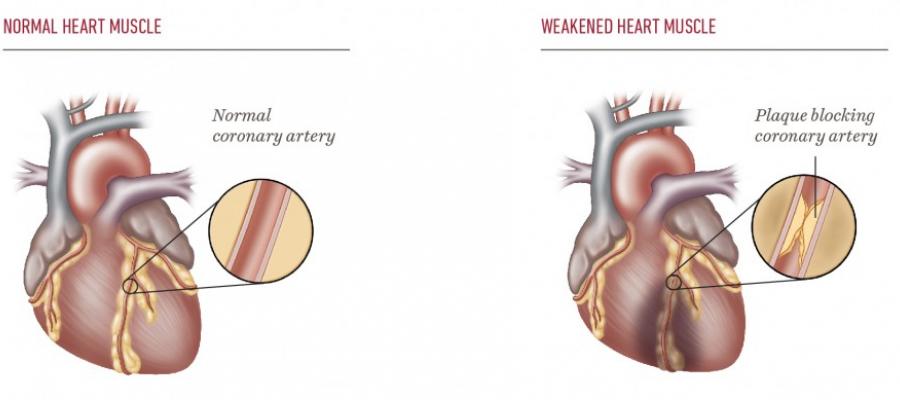
The coronary arteries that supply blood to all the major organs in your body are interconnected by a flexible band of tissue called the coronary artery
The heart muscle contracts and expels blood into the coronary arteries. Blood that has passed through the arteries is carried by them to the various parts of your body. When there is an obstruction to the blood flow, it results in a heart attack.
The left side of the coronary artery branches off into two branches, the right coronary artery and the right atria. The right atrium supplies blood to the right ventricle, which is the upper chamber of your heart. Right atrium provides blood to the liver, spleen, kidney and pancreas. Right ventricular muscle contracts and releases blood into the left ventricular. The left ventricular carries blood to the lungs, heart, brain and other parts of your body.
Coronary artery disease can be described as a heart attack caused by a blockage in the coronary arteries. There are a narrowing of the arteries from the inside and outside the heart. If this narrowing of the arteries continues for some time, it results in hardening of the arteries. The heart becomes incapable of pumping blood. This condition is referred to as atherosclerosis. Other types of atherosclerosis include thrombosis and plaques.
Coronary artery disease is divided into three classes: primary, secondary and progressive. Primary is caused by infarction. The infarction is the sudden breakage or opening of the artery wall, either due to the presence of a foreign body or infection. Secondary coronary artery disease is caused by the weakening of the wall due to damage or age. The most common reason for the weakening is coronary heart disease. And finally, progressive coronary artery disease is caused by heart failure that is irreversible.
Coronary artery disease is diagnosed based on a number of factors. These include angiogram, x-rays, blood tests, and ultrasound scans. If you have any questions, you should always see your doctor.
When plaque forms in a coronary artery or when a new artery forms, it becomes plaque. This plaque is composed primarily of calcium and blood. As plaque grows, it becomes thinner and harder. As a result, it prevents blood flow.
Plaque is also called calcification and is the cause of heart disease. This is not only the cause of heart disease, but also damage to the walls of blood vessels. As a result, blood cannot flow freely in and out of arteries. In the case of coronary artery disease, damage is limited not only to the walls, but also to the capillaries. Once the walls are damaged, they do not receive the blood supply necessary for blood circulation. The damaged tissue swells, swells, and thickens.
The walls of the arteries thicken as plaque builds up
Over time, the size of the arteries will continue to increase, causing more blood to clot. This can lead to a heart attack. This is what triggers a heart attack.
If you are experiencing symptoms of a heart attack, you need to take immediate action. Symptoms are a feeling of chest pain, dizziness, shortness of breath, and abdominal pain. However, if you have recently experienced any of these symptoms, you should consult your doctor and find out more about the disease on the website https://benakat.co.id/. He will tell you if your symptoms are caused by a heart attack or heart disease.
Your doctor may order an electrocardiogram (ECG) or an echocardiogram (EKG) for a thorough check-up. You may also be asked about smoking and other cardiovascular risks. This helps the doctor to decide the next step.
Other measures such as taking medications may help in treating the condition. Anti-platelet drugs or cholesterol-lowering medications are sometimes prescribed. Blood pressure lowering medications may also be taken to reduce the risk of clots. In severe cases, surgery may be recommended.
In some cases, if a patient has been exposed to a massive amount of cholesterol or has suffered from a heart attack or heart failure, he may be treated with drugs or medications that inhibit the production of cholesterol in the blood. This can be achieved by drugs such as statins, HDL cholesterol-lowering medications and anti-platelet drugs. Liposuction may be used to remove the plaque.